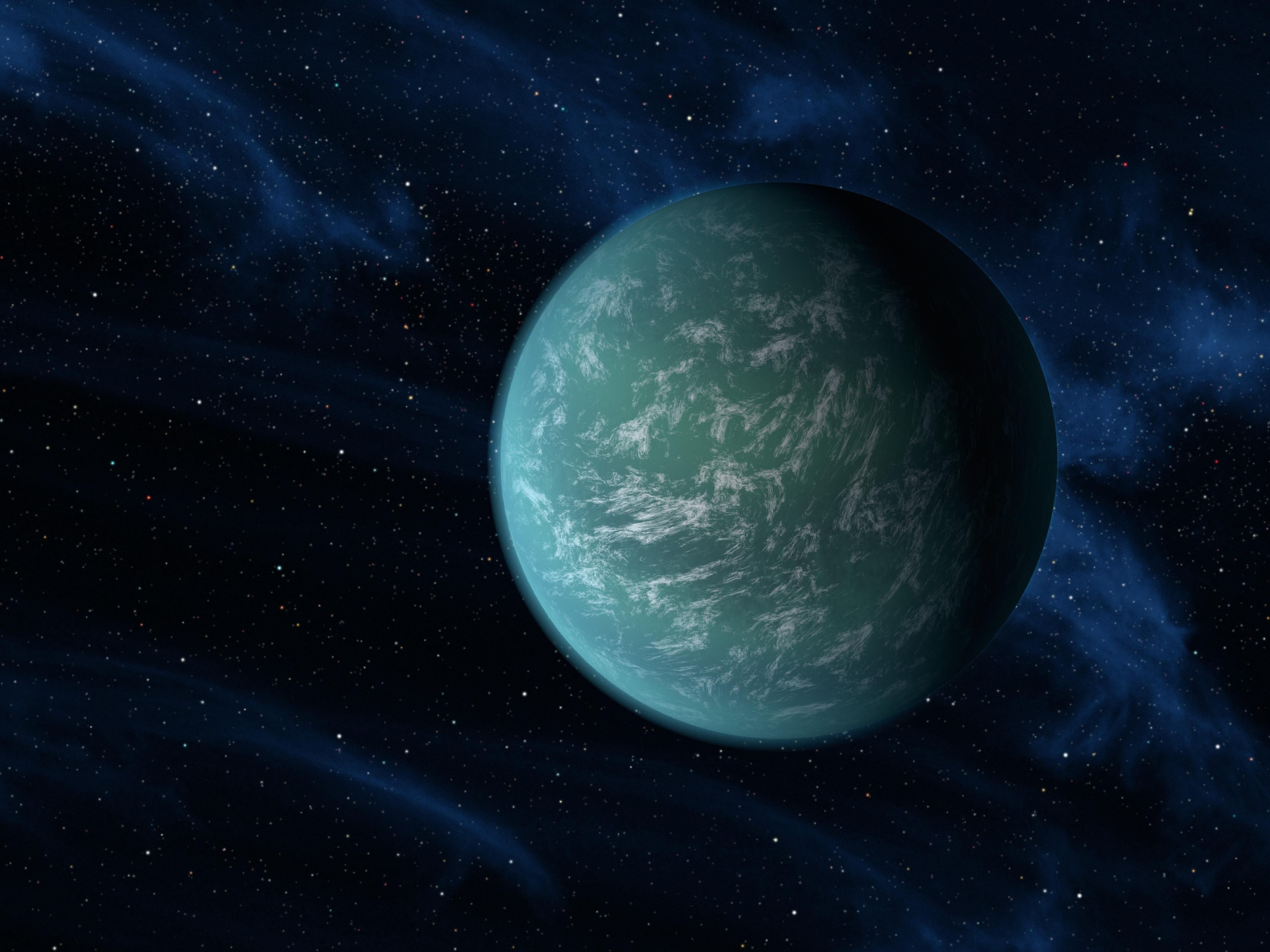Scientists spot super-Earth planet in Earth-like orbit

Scientists suspect they have identified an intriguing new alien planet in a particularly roundabout way.
The planet is eye-catching because it bears some eerie similarities to Earth, but also some stark differences. In terms of size, the scientists believe the world is about four times Earth's mass. The planet's star is a dim dwarf star, perhaps even a brown dwarf, or "failed star." The planet's year lasts about 617 Earth days, even though its orbit falls somewhere between those of Earth and Venus around our sun.
But the team of scientists that discovered the new alien world didn't observe it directly. They didn't even spot it by identifying how it interacts with its star. Instead, the researchers found the planet because of the way it and its star warped and magnified light, like a lens — a phenomenon called gravitational microlensing.
Related: The biggest alien planet discoveries of 2019
Gravitational microlensing relies on the fact that massive objects warp the space around them. When a telescope, a massive object and a target line up in just the right way, the massive object warps the light emitted by the target, magnifying it. It's a very uncommon event — just one in one million stars are being lensed at any given time, according to a statement about the new research from the University of Canterbury in New Zealand.
To find this new planet, scientists combined microlensing observations gathered by two facilities: the Optical Gravitational Lensing Experiment based in Poland; and the Korea Microlensing Telescope Network, which consists of a trio of instruments in Chile, South Africa and Australia.
Scientists can use the precise details of microlensing observations to calculate what acted as the lens — usually, a single star. But by analyzing the brightness of the target when it was microlensed versus when it wasn't, the scientists realized that the lens was actually a system, not a lone star. The feat required poring through five days of data to isolate five hours of relevant observations, and then confirming that an instrument fluke wasn't to blame for the unusual finding.
Get the Space.com Newsletter
Breaking space news, the latest updates on rocket launches, skywatching events and more!
The result was a basic description of the distant star system: A star one-tenth the mass of our sun and a planet perhaps four times the mass of Earth — making it a super-Earth or a sub-Neptune — that circles its star between the orbital distances of Venus and Earth. That's an exciting combination because among the thousands of exoplanets scientists have identified to date, such worlds in such orbits are pretty rare, according to the statement.
The research is described in a paper published May 7 in The Astronomical Journal.
- 7 ways to discover alien planets
- Photographing an exoplanet: how hard can it be?
- The strangest alien planets in pictures
Email Meghan Bartels at mbartels@space.com or follow her @meghanbartels. Follow us on Twitter @Spacedotcom and on Facebook.
OFFER: Save 45% on 'All About Space' 'How it Works' and 'All About History'!
For a limited time, you can take out a digital subscription to any of our best-selling science magazines for just $2.38 per month, or 45% off the standard price for the first three months.
Join our Space Forums to keep talking space on the latest missions, night sky and more! And if you have a news tip, correction or comment, let us know at: community@space.com.

Meghan is a senior writer at Space.com and has more than five years' experience as a science journalist based in New York City. She joined Space.com in July 2018, with previous writing published in outlets including Newsweek and Audubon. Meghan earned an MA in science journalism from New York University and a BA in classics from Georgetown University, and in her free time she enjoys reading and visiting museums. Follow her on Twitter at @meghanbartels.
-
rod I like the paper link reported in the article, https://iopscience.iop.org/article/10.3847/1538-3881/ab893e The abstract has some geeky, exoplanet details :) OGLE-2018-BLG-0677 is studied for sometime now and distance said to be 0.63 to 0.72 AU from the host star for 0677 b. This site shows 4266 confirmed exoplanets now, http://exoplanet.eu/ 120 exoplanets have been found using the microlensing method.Reply










